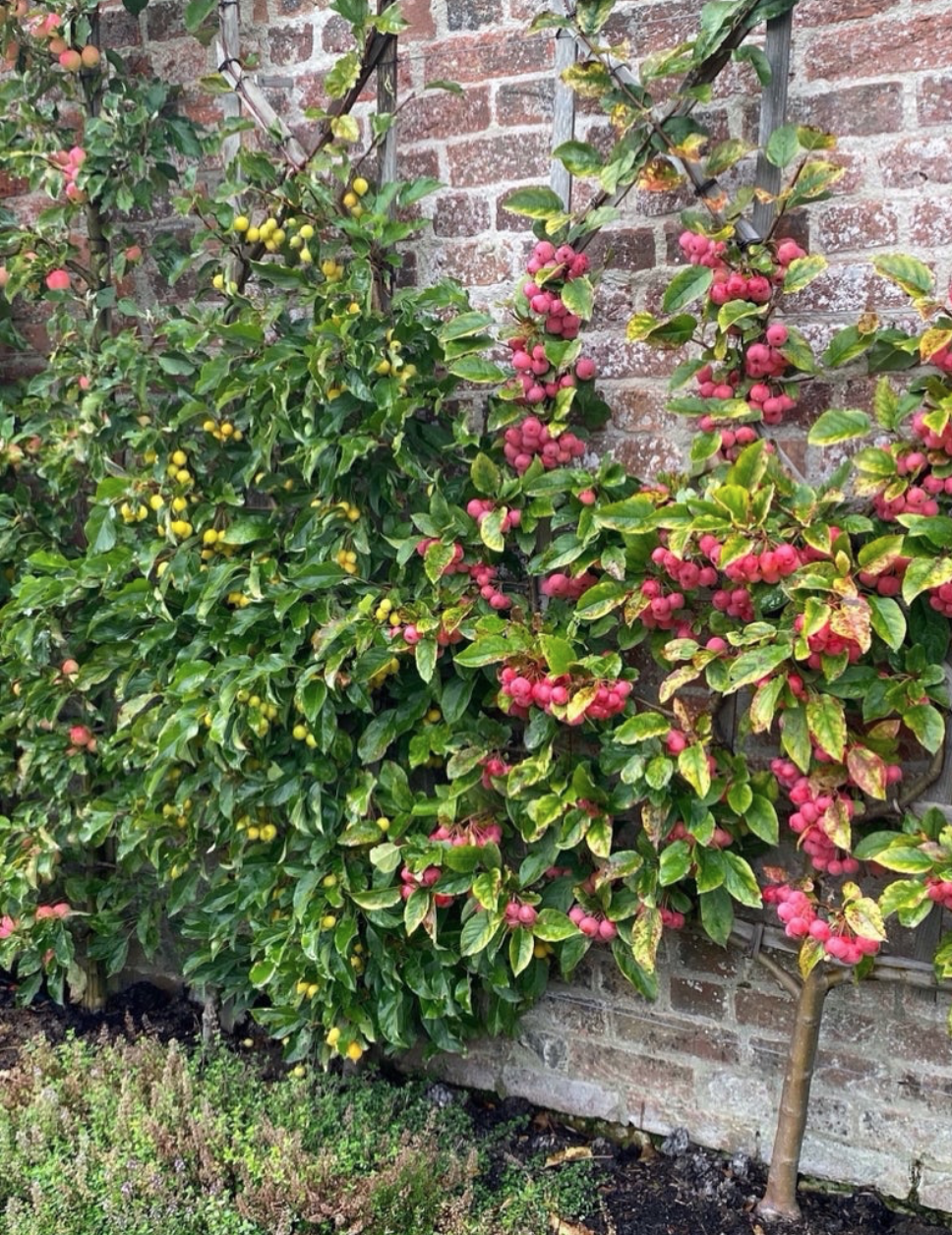
How to Plant and Train Espaliered Fruit Trees
SEO Space
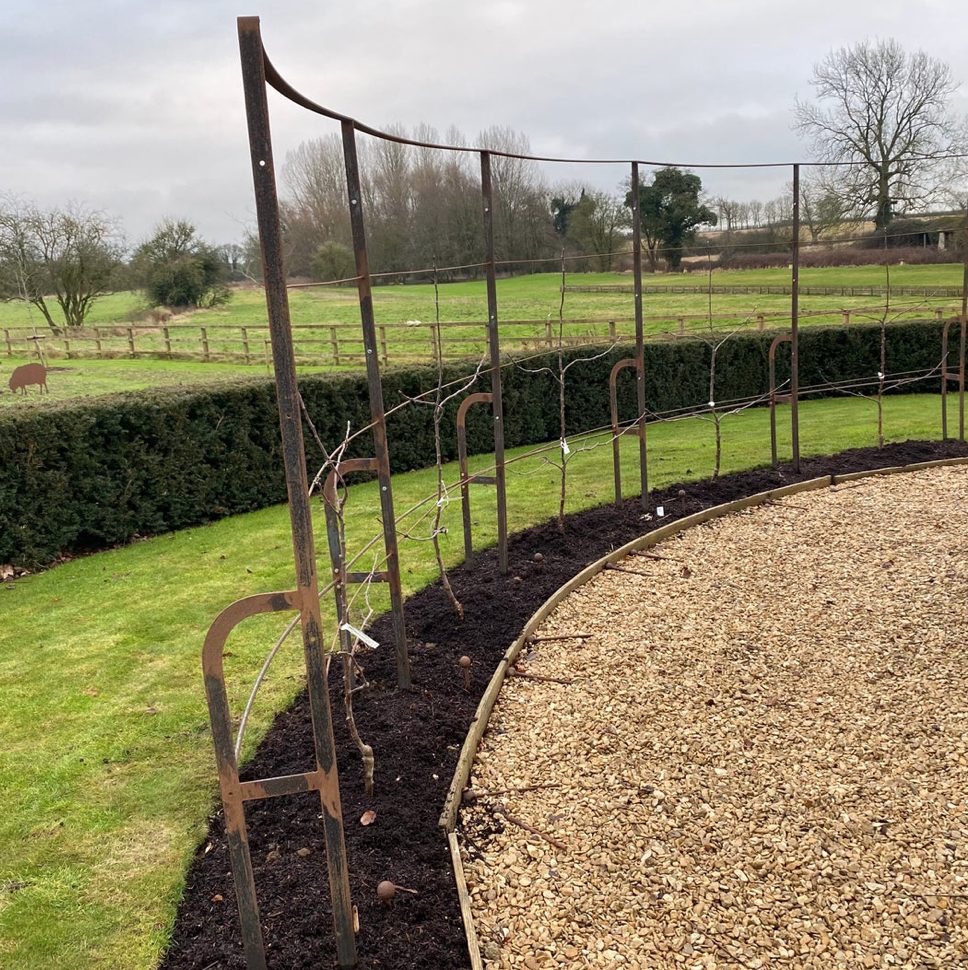
Our new free-standing espalier trellis
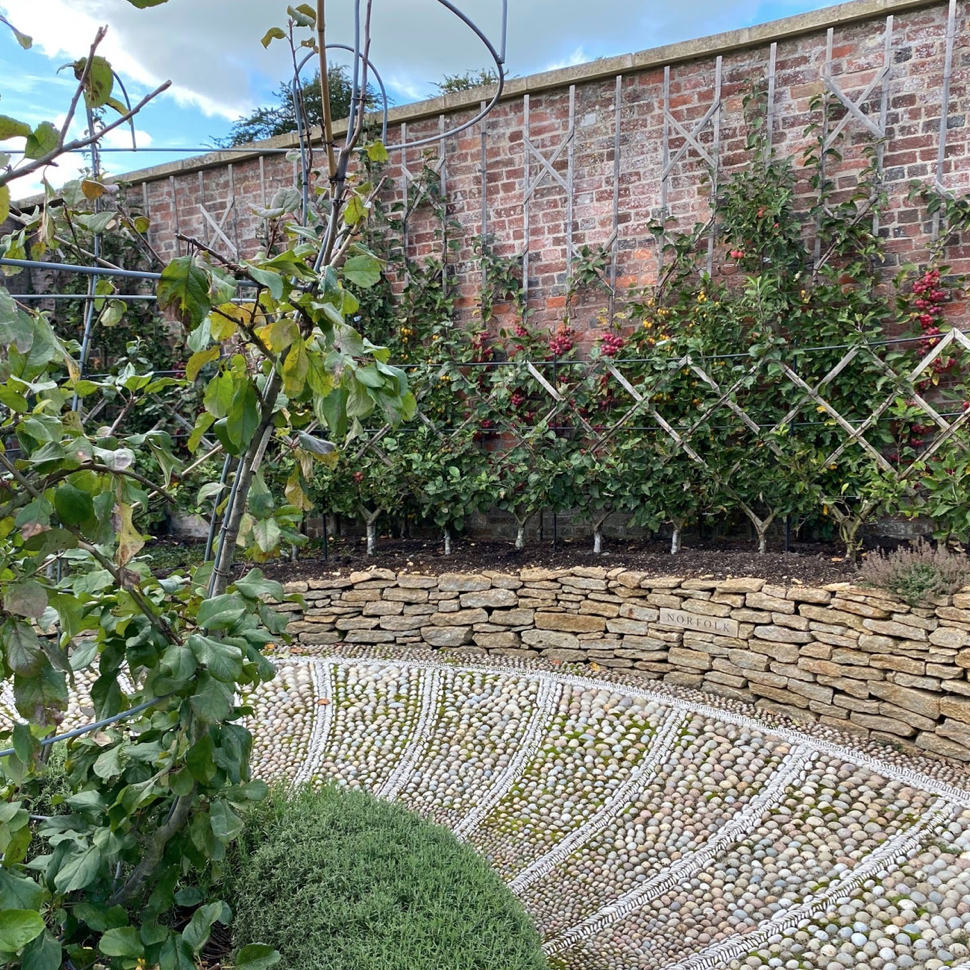
Espaliers can be as intricate as your imagination allows; here they are growing in the walled garden at The Newt in Somerset
I have always wanted my fruit trees to be useful as well as beautiful and training them as cordons, espaliers or step-overs means they can be used to divide areas of the garden, edge a border or make maximum use of a garden wall.
I love picking and eating apples straight off the tree and I find that the varieties I like best (like ‘Spartan’, a wonderful eater) are not generally available in the shops. We have just added a new free-standing espalier to our garden and planted ‘Jupiter’, ‘Robinette’ and ‘Fiesta’ apples along it. In writing this post, I wanted to document the process and, I hope, to inspire you to add some espaliered or step-over fruit trees to your own garden.
Apples and pears as well as plums, peaches and apricots have traditionally been trained along tensioned wires fastened to a wall. We aren’t lucky enough to have a walled garden here in Gloucestershire but I was keen to grow some espaliered fruit round our outdoor dining room so we set about designing a free-standing espalier trellis which we will be showing at RHS Chelsea this year. I shall also be using our apple step-over supports to edge a bed that runs along a drop down to the next level of the garden.
How to plant, train and support espaliered fruit trees
You can either start with a maiden whip (a young, single-stemmed plant that has still has a terminal bud and no branches) or, if you are as impatient as I am, you can buy a tree that has been trained for 2 years and already has its lower tiers. Mine came from specialist grower, Orange Pippin Fruit Tress, and came bare-rooted in mid-January.
-
If you are growing from a maiden, you are aiming to train the first pair of horizontal branches at the level of the first wire (about 50cm above ground level). Lower buds or shoots can be cut or rubbed off
-
For a maiden, cut the leader just above the first wire, leaving a bud at the top to continue to grow upwards. Gently train two shots from the lower buds along the horizontal support
-
For both trained and maiden trees, the top bud will grow upwards to continue the main stem
-
In winter, the leader is cut a little above the level of the next wire. The top bud is allowed to grow upwards to extend the main stem and the two lower buds can be trained to the wire for the next tier of branches (see below)
We planted 3 varieties of 2-year old apples grown on M9 rootstock:
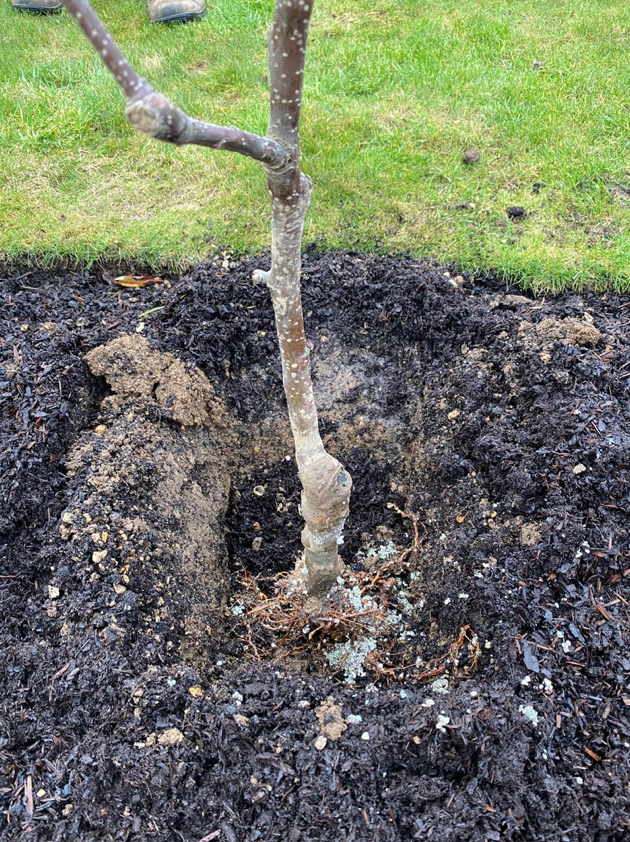
1. The two-year old trees are planted with Root Grow (containing mycorrhizal fungi for root growth) making sure that the graft is above soil level.
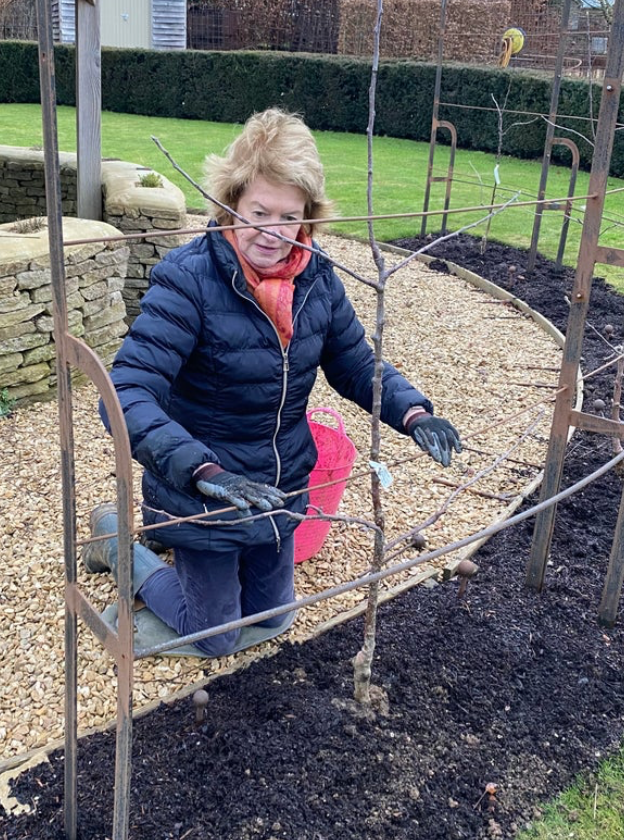
2. The leader and side branches are tied in to the horizontal wires.

3. The leader is pruned just above the next horizontal – the top 3 buds will produce the next leader and 2 laterals.
How to plant, train and support step-over apples
-
Position the apple step-over supports along the line where the maidens are to be planted
-
In winter, plant the maiden whip close to one of the vertical supports, tying it in at the level of the horizontal bar
-
In spring, gradually and carefully begin to bend the maiden towards the horizontal and tie it on – be patient, it can’t be done at one go, it may take a season!
-
In summer, shorten any laterals (side branches) to 2 or 3 leaves
-
Prune the leader when it reaches the desired length – a single plant will eventually cover a 2 metre run.
How to create cordons
These single-stemmed trees, suitable for a restricted wall space or for our espalier trellises, are grown on dwarfing or semi-dwarfing root stock.
Normally the leader is left unpruned until it reaches the top wire (check the variety of apple you are growing – a tip-fruiting apple should be cut back earlier). Once the leader reaches the top, it is cut off which will encourage the formation of short, fruit-bearing spurs.Browse the complete range at www.muntons.net
Follow us on Pinterest for more advice and inspiration for your English country garden: www.pinterest.co.uk/plantsupports
Follow us on Instagram: www.instagram.com/muntons_plant_supports

Step-over apples in the vegetable garden at RHS Rosemoor
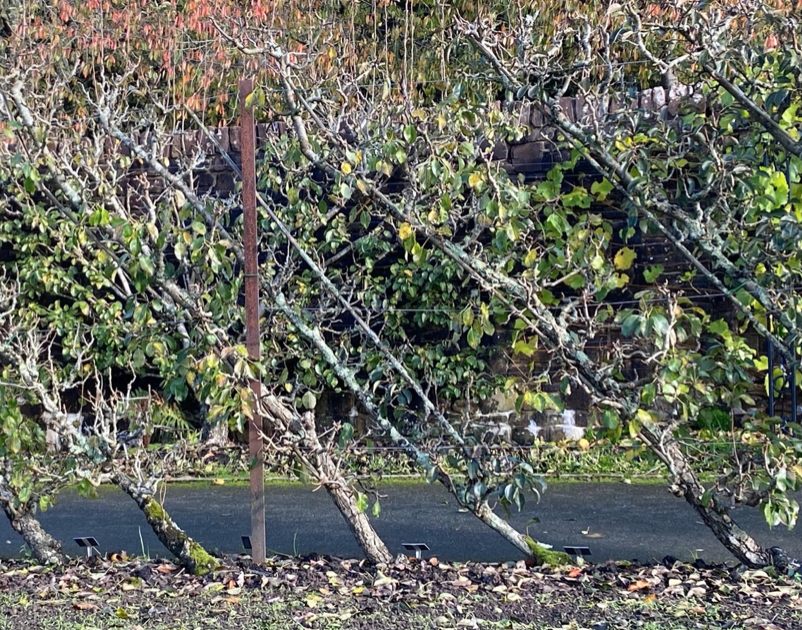
Cordon-trained apples at RHS Rosemoor

I was excited to visit The Newt in Somerset in September. The story of trained apples is beautifully shown in these extensive gardens. I shall be back to see the blossom in April.
Gilles Guillot who continues to advise the gardeners at The Newt in Somerset
